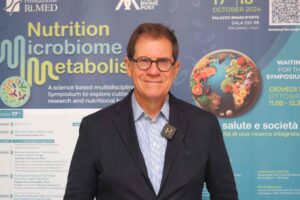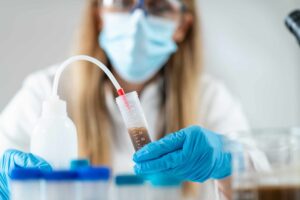What is already known
Acute respiratory infections are one of the leading cause of death among children worldwide. These infections are typically treated with antibiotics, but pathogenic bacteria are becoming increasingly resistant to one or even several classes of antibiotics. These antibiotic-resistant bacteria have now become a frequent cause of respiratory infections.
What this research adds
The authors discuss the threat of antimicrobial resistance and highlight how the human microbiota could be leveraged as a source of new therapeutics to prevent or treat respiratory infections. For example, recent work has showed that Rothia bacteria can inhibit the growth of the respiratory pathogen Moraxella catarrhalis, and a handful of clinical trials have evaluated live bacteria for preventing or treating respiratory pathogens..
Conclusions
Microbiota-based approaches could help researchers expand the therapeutic toolkit for fighting antibiotic resistance and treating tough infections.
Antibiotic-resistant bacteria have become a frequent cause of respiratory infections, which account for nearly four million deaths every year, particularly in low- and middle-income countries. The human microbiota could be leveraged as a source of new therapeutics to prevent or treat these tough infections, experts argue.
Writing in mBio, Jillian Hurst and Matthew Kelly at Duke University School of Medicine in Durham, North Carolina, discuss the threat of antimicrobial resistance and highlight how microbiota-based approaches could help researchers expand the therapeutic toolkit for fighting antibiotic resistance.
Antibiotic resistance, which has been fueled by the overuse and misuse of antibiotics in humans and livestock, occurs when bacteria evolve mechanisms that protect them from the effects of antimicrobial drugs.
“In the United States alone, antimicrobial-resistant organisms cause more than 2.8 million infections and 35,000 deaths each year,” the authors say. “Over the past decade, notable progress has been made in slowing the spread of some antimicrobial-resistant organisms; however, antibiotic resistance to several common bacterial respiratory pathogens rose substantially during this time period.”
Untapped resource
Between 1930 and 1962, more than 20 classes of antibiotics were brought to market in the United States, but the high costs of research and development in part discouraged pharmaceutical companies from developing new antibiotics. Over the following 50 years, only two new antibiotic classes were approved, and most antimicrobial drugs currently in development are analogues of existing antibiotics, which are typically natural products or their derivatives.
Hurst and Kelly note that the human microbiota may represent an untapped source of new antimicrobials, as many of these bacteria have evolved to produce antimicrobial compounds that target competing microbial species. “The development of next-generation sequencing methods and improved tools for genomic and proteomic analysis enables a targeted and biologically informed approach to mining these interspecies relationships for novel antibiotics,” the authors say.
Fighting infections
A handful of clinical trials have evaluated live bacteria for preventing or treating respiratory pathogens. For example, administering Neisseria lactamica resulted in the protection from N. meningitidis infection among university students, a 2015 study found. Similarly, Corynebacterium can eradicate Staphylococcus aureus from most carriers, a 2000 study showed.
Recent work has showed that Rothia bacteria can inhibit the growth of the respiratory pathogen Moraxella catarrhalis. This antibacterial activity is mediated in part through the secretion of an enzyme that targets the cell wall of M. catarrhalis, researchers reported this year.
The findings suggest that a better understanding of the interplay between the microbiota and the upper respiratory tract could inform the development of nasal probiotics, the authors say. “Highly targeted approaches focused on the human microbiota could identify biotherapeutics that expand our toolset for combatting antibiotic resistance and for precisely engineering the microbiome for the promotion of human health.”












